Document information
Physical location:
H16497 Leichhardt papers, box 13/6(a), La Trobe Australian Manuscript Collection, State Library of Victoria, Melbourne. 64.10.03Preferred Citation:
Ernest Giles to Ferdinand von Mueller, 1864-10-03. R.W. Home, Thomas A. Darragh, A.M. Lucas, Sara Maroske, D.M. Sinkora, J.H. Voigt and Monika Wells (eds), Correspondence of Ferdinand von Mueller, <https://vmcp.rbg.vic.gov.au/id/64-10-03>, accessed September 11, 2025
Victoria Crescent
East Collingwood
3rd. October 1864
My Dear Dr Mueller
I have read with much interest a portion only of the Printed letter of the Revd. Mr
Clarke to the Sydney Morning Herald
bearing upon the subject of Marked Trees supposed to have been left by
Leichardt
and discovered by Mr Heley in the Maranoa Country and by Mr Gregory on the Cooper
— A lengthened argument might be entered into on this subject but that is not my intention
now I shall merely give my impression & opinion on the marked Trees mentioned by Mr
Clarke and my knowledge & experience with regard to other marked Trees that have come
under my notice & manipulation & you may agree with me that by an analogy of argument
of the facts I have drawn from Trees I have operated upon that I may not be far wrong
in my opinion as regards those found by Mr Heley & mentioned by the Revd Mr Clarke
— In the first place Mr Heley finds a Camp which He supposes to have been
Leichardts
and at this Camp a Tree marked
 .
it appears to me that this (supposing it to be the full information originally marked
on this tree) can have but one of two meanings viz it is either the number of the
Camp or the date of it — In the first supposition the numerals may stand for 15 &
the letter A for
arrival
from the Settlements — or it may represent a date the numerals still signifying 15
& the A — for April or August the year being left untold — My opinion is that the
Tree was one of
Leichardts
marked trees & the figures & letters intended to signify the date, but that some other
figures & letters may have been hidden under the new Growth of Bark with regard to
the 2nd. (or Westward) marked tree found by Mr Heley & marked
.
it appears to me that this (supposing it to be the full information originally marked
on this tree) can have but one of two meanings viz it is either the number of the
Camp or the date of it — In the first supposition the numerals may stand for 15 &
the letter A for
arrival
from the Settlements — or it may represent a date the numerals still signifying 15
& the A — for April or August the year being left untold — My opinion is that the
Tree was one of
Leichardts
marked trees & the figures & letters intended to signify the date, but that some other
figures & letters may have been hidden under the new Growth of Bark with regard to
the 2nd. (or Westward) marked tree found by Mr Heley & marked
 .
apparently the same as the other I think it was intended to convey the date &c as
I explained before only this time signifying the 25th. of April or August having originally
had more numerals & letters marked on it (as
.
apparently the same as the other I think it was intended to convey the date &c as
I explained before only this time signifying the 25th. of April or August having originally
had more numerals & letters marked on it (as
 .
) & that a new growth has overgrown the letters &c perhaps hiding the year indicated
altogether — The Pith of my argument is this
that the Bark or even young Wood
of the marked trees found by Mr Heley may have grown over some of the original letters
marked on either one or both of the Trees in question as from my own
experience I have found it to do — & as I shall show you presently — with regard to
the last
.
) & that a new growth has overgrown the letters &c perhaps hiding the year indicated
altogether — The Pith of my argument is this
that the Bark or even young Wood
of the marked trees found by Mr Heley may have grown over some of the original letters
marked on either one or both of the Trees in question as from my own
experience I have found it to do — & as I shall show you presently — with regard to
the last
 .
found by Mr Gregory on the Cooper tho' differing from the others found by Mr Heley
in having no other marks attached to it & in general appearance — other original letters
may in this instance also have been enveloped by a fresh growth of Bark & young wood
— But from Mr. Gregorys opinions & remarks upon it I am inclined to think He has given
us every information on the subject that the Tree itself could afford — & that it
was Leichardts marked tree & the last known trace we have of him.
.
found by Mr Gregory on the Cooper tho' differing from the others found by Mr Heley
in having no other marks attached to it & in general appearance — other original letters
may in this instance also have been enveloped by a fresh growth of Bark & young wood
— But from Mr. Gregorys opinions & remarks upon it I am inclined to think He has given
us every information on the subject that the Tree itself could afford — & that it
was Leichardts marked tree & the last known trace we have of him.
1
W. B. Clarke,
Sydney morning herald, 24 August or 10 September 1858 (the latter being a summary of the earlier article).
2
 .
.
3
 .
.
4
 .
.
5
 .
.
I shall now proceed to show my reasons for forming the opinions I have above stated
with regard to the Trees in question — In July 1862 I saw Burkes marked Tree at his
first Depôt on Coopers Creek marked thus
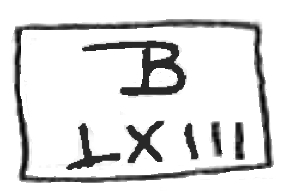 .
at the time of my visit the mark was about 18 months old — & the New Bark was rapidly
approaching the B as per —
No 1
sketch enclosed
— In Septr. 1862 on camping on the Ana Branch of the Darling in company with Mr Haverfield
I saw an indistinctly marked Tree see sketch
No 2
not being able to get any information for it as it then appeared I chopped a portion
of the Bark away from the mark & found a legible & distinct mark on the Tree (see
also sketch
No 2
) of a Surveyors marked tree the Camp of the Gentleman who Surveyed the Ana Branch
— Also in company with Mr Dunbar of Menindie we found a Tree on the Bend below Menindie
Creek with a strange & unintelligible Brand upon it which we could not decipher —
but after about an hour's work with a Tomahawk we found that a thick envelope of
Bark & young wood
had overgrown an old mark on the Tree & eventually we discovered that it was
Captain Sturts Marked Tree
(see sketch
No 3
) giving us full information in reward for our trouble — the young wood had completely
grown into the
notches
of the original letters & it was not without considerable nicety of handling that
we accomplished our task without injuring the letters beneath — Thus I argue from
my own experience that it is highly probable that more information is often hidden
under the Bark of Marked trees (after a lapse of time) than appears merely upon the
surface — The L
found by Mr Gregory certainly appears more elaborately & evenly cut than the others found by Mr Heley & their crooked & warped appearance supports me in the opinions
I have expressed — I am also of opinion that a party in search of the remains of Leichardt
need not now go any further to the Eastward that the spot where Mr Gregory found the
Tree marked L
on the Cooper.
.
at the time of my visit the mark was about 18 months old — & the New Bark was rapidly
approaching the B as per —
No 1
sketch enclosed
— In Septr. 1862 on camping on the Ana Branch of the Darling in company with Mr Haverfield
I saw an indistinctly marked Tree see sketch
No 2
not being able to get any information for it as it then appeared I chopped a portion
of the Bark away from the mark & found a legible & distinct mark on the Tree (see
also sketch
No 2
) of a Surveyors marked tree the Camp of the Gentleman who Surveyed the Ana Branch
— Also in company with Mr Dunbar of Menindie we found a Tree on the Bend below Menindie
Creek with a strange & unintelligible Brand upon it which we could not decipher —
but after about an hour's work with a Tomahawk we found that a thick envelope of
Bark & young wood
had overgrown an old mark on the Tree & eventually we discovered that it was
Captain Sturts Marked Tree
(see sketch
No 3
) giving us full information in reward for our trouble — the young wood had completely
grown into the
notches
of the original letters & it was not without considerable nicety of handling that
we accomplished our task without injuring the letters beneath — Thus I argue from
my own experience that it is highly probable that more information is often hidden
under the Bark of Marked trees (after a lapse of time) than appears merely upon the
surface — The L
found by Mr Gregory certainly appears more elaborately & evenly cut than the others found by Mr Heley & their crooked & warped appearance supports me in the opinions
I have expressed — I am also of opinion that a party in search of the remains of Leichardt
need not now go any further to the Eastward that the spot where Mr Gregory found the
Tree marked L
on the Cooper.
6
 .
.
7
This sketch, and the following sketches referred to, were enclosures and are placed
at the end of the letter.
8
A large letter 'L' in script, not block lettering.
9
As above.
I am
Dear Sir
Yours very truly
W. E. P. Giles
10
See also W. Conn to M, 5 September 1864, in which Conn suggests that Giles be sent to investigate graves Conn had discovered
over two years before (Giles being a member of his party at the time), said by local
Aborigines to be of white men who had been killed by Aborigines.
No 1
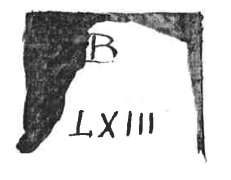 .
.
11
 .
.
Burkes marked tree at 1st. Depôt on Coopers Creek
No 2
Marked tree found on Ana Branch of the Darling
Found thus
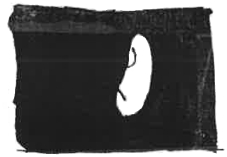 .
.
12
 .
.
Chopped out & left thus
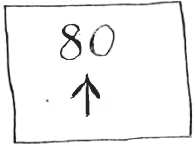 .
.
13
 .
.
No 3
Marked tree below the Menindie Creek found thus
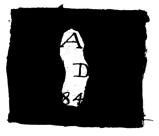 .
.
14
 .
.
Chopped out & left thus
15
64-10-03_image
11
.jpg.
Central Australian Expedition of Captn Sturt
